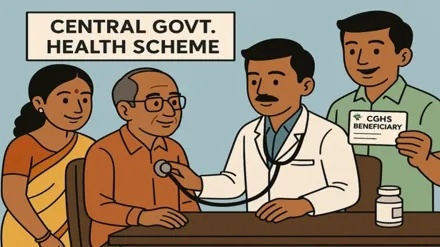
Revolutionizing Healthcare Access through Digital Innovation
The Central Government Health Scheme (CGHS) has embarked on a transformative journey in 2025, leveraging digital technology to streamline services and improve accessibility for millions of beneficiaries. Under the new guidelines, the Ministry of Health has introduced a comprehensive digital framework that includes an HMIS portal, mobile application, and automated payment systems. These innovations aim to eliminate bureaucratic hurdles, reduce wait times, and ensure seamless access to healthcare services for government employees, pensioners, and their families. By prioritizing digital integration, the scheme now offers a unified platform for managing medical appointments, document verification, and device approvals, marking a significant shift from traditional, paper-based processes. This overhaul not only enhances efficiency but also strengthens transparency, allowing beneficiaries to monitor their health needs in real-time. The reforms reflect a broader vision of modernizing public healthcare infrastructure to meet the evolving demands of a digitally connected society.
Unified Identity Verification and Secure Data Management
One of the most impactful changes in the CGHS 2025 guidelines is the introduction of a PAN-based unique ID system, akin to Aadhaar, to ensure accurate identity verification for all beneficiaries. This digital ID eliminates the risk of duplicate registrations and fraud, while consolidating family health records into a single, accessible database. Previously, beneficiaries had to submit multiple documents for card renewals or medical approvals, leading to delays and administrative complexities. Now, a single PAN-linked ID simplifies the process, enabling instant access to medical histories, appointment schedules, and device approvals. This system also enhances data security by minimizing the need for physical document storage, reducing the chances of identity theft or misuse. For elderly beneficiaries, this change is particularly transformative, as it allows them to manage their healthcare needs without frequent visits to government centers, ensuring convenience and peace of mind.
Streamlined Payment Systems and Instant Approval Processes
The digital overhaul of CGHS has also revolutionized the payment process, replacing the outdated ‘Bharatkosh’ portal with a secure, real-time payment system integrated into the HMIS portal. Beneficiaries can now subscribe or renew their health scheme membership online, with instant verification of transactions to avoid delays or refund issues. This shift eliminates the need for in-person visits to CGHS offices, reducing administrative burdens and ensuring faster processing of payments. Additionally, the new system has expedited the approval process for critical medical devices such as oxygen concentrators, CPAP machines, and BiPAP devices. Previously, these devices required multiple document submissions and prolonged waiting periods, but under the 2025 guidelines, approvals are now completed within five days through an online application process. This change has been a lifesaver for patients with chronic respiratory conditions, enabling them to access essential equipment promptly without compromising their health or comfort.
Real-Time Communication and Enhanced User Experience
To keep beneficiaries informed and engaged, the CGHS 2025 framework now includes automated SMS and email notifications for updates on applications, approvals, and payment verifications. This feature ensures that users are always aware of the status of their health-related requests, eliminating the need for constant follow-ups or manual inquiries. Additionally, users are advised to regularly update their passwords to safeguard their accounts, emphasizing the importance of cybersecurity in digital health services. For senior citizens and technologically inexperienced individuals, this system has been a game-changer, as they can now receive critical information directly on their mobile devices without relying on intermediaries. The integration of real-time communication also strengthens trust in the system, as beneficiaries can track their healthcare transactions and access services with greater confidence. This level of transparency and user-centric design is a testament to the government’s commitment to modernizing public healthcare delivery.
Transforming Public Healthcare: A Digital Health Partner
The 2025 CGHS reforms represent more than just technological upgrades—they signify a paradigm shift in how public healthcare services are delivered. By digitizing processes, the scheme has transitioned from a traditional government program to a dynamic digital health partner, tailored to meet the needs of its beneficiaries. This transformation has not only improved efficiency but also empowered individuals to take control of their health management. For government employees and pensioners, the new system offers unparalleled convenience, ensuring that essential services are accessible without the hassle of physical paperwork or long queues. As the scheme continues to evolve, it sets a precedent for other public services to adopt similar digital frameworks, fostering a more responsive and inclusive healthcare ecosystem. The success of these reforms underscores the potential of technology to enhance public welfare while maintaining the integrity and accessibility of essential social programs.



